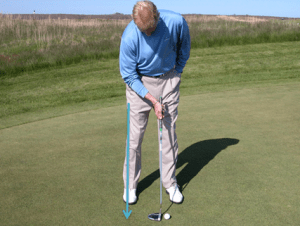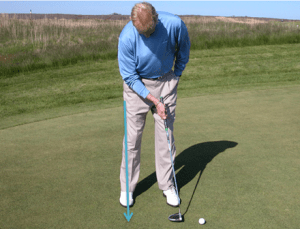Putting in Golf: Be Wary of the Forward Press

by Dr. T.J. Tomasi A Legacy Post by Keiser University College of Golf Senior Faculty and Director of Research (1940-2023)
Often after Phil Michelson played well on TV, my lesson book was filled with students putting poorly. It wasn’t because Phil couldn’t putt. He is an excellent putter because it is hard to copy his technique, which is the forward press of the putter, where the hands press toward the target to start the putting stroke. He doesn’t always do it but when he does, unless you’re an expert, copying him is a dangerous move that can lead to off-line putts.
What is the Forward Press in Golf
The forward press in golf is a small, deliberate movement where the hands are pushed slightly ahead of the ball before the swing begins, often used to promote a smooth takeaway. For skilled golfers, it helps engage the body and encourages a more fluid swing. However, for many amateur golfers, the forward press can create more problems than benefits, as it often leads to inconsistent hand positions and improper clubface alignment. This inconsistency can cause amateurs to mistime their swing or overuse their wrists, leading to poor contact or erratic shots. For most beginners, it’s better to focus on maintaining a stable, neutral setup to build consistency before incorporating advanced techniques like the forward press.
Forward Press in Your Golf Swing
Phil Michelson doesn’t always do it but when he does, unless you’re an expert, copying him is a dangerous move that can lead to off-line putts. Here is why:
Most putters have a tiny bit of loft—usually 3 or 4 degrees—built into the face of the club. This is designed to make the ball pop into the air for a brief moment at impact so that it clears the turf and then quickly lands and rolls smoothly toward the hole. If you didn’t have any loft on your putter, you’d pinch the ball into the turf at impact, and the subsequent rebound off the ground would cause the ball to bounce and skip off the target line.
The problem with forward pressing is that, if done incorrectly (and it’s very easy to mess it up), you’re effectively taking that natural loft off the putter by pressing your hands forward at address and then allowing them to stay forward at impact. Not only will you generally de-loft the putter face at impact, but you probably won’t do it consistently. You may manipulate the putter head into a good position on some of your putts and then jam the ball into the green on the others. In other words, your putting game will be all over the map, which is probably the worst thing possible for building confidence.
How to Stop Forward Press in Golf
To simplify things, you should forget the forward press and focus instead on keeping the cup in your trail wrist, as I am doing in the photo. To make a smooth stroke, practice with your lead hand behind you while stroking some 15-footers.

“Keep the cup” by using a soft rocking motion of your shoulders to move the putter head.

After you read the putt correctly, quiet hands are the key to good putting.
Note:
The clubhead swings past the handle because it moves at a different speed due to a heavier head. This happens naturally if you keep the cup and stroke the ball without manipulation.
And be sure to shield your eyes when you see Phil Michelson putt using the forward press method, lest you be tempted to copy what only he and a few other experts can do well.
Learn more!
Want more tips? If you want to take your game to the next level, contact our team at Keiser University’s College of Golf & Sport Management today. With our dedication and experience, we can elevate your game to new heights together. Give us a call today at 888-355-4465.














